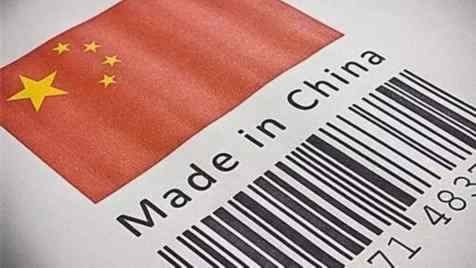
Business
22:59, 26-Jan-2018
Challenges ahead of 'Made in China 2025'
By CGTN's Xu Xinchen

The “Made in China 2025” strategy, a plan released in 2015 by the State Council, China’s cabinet, aims to fast-track the country’s transition from being a large manufacturer into a competitive global player.
Two years on, the National Manufacturing Advisory Committee (NMAC), a think tank organized by the State Council, has released a green paper assessing the progress of the country’s “Made in China 2025” strategy, and expects China’s home developed telecom technology, railways, and power systems to dominate those industries by 2025.
However, the road to the top will not be free of bumps. Many challenges remain for the 10 key sectors that are in focus in the plan.

Lu Yongxiang, the director of the National Manufacturing Strategy Advisory Committee (L), and Xin Guobin, the vice minister of China’s Ministry of Industry and Information technology (R), on the press release of the green paper of the technological roadmap for "Made in China 2025." /CGTN Photo
Lu Yongxiang, the director of the National Manufacturing Strategy Advisory Committee (L), and Xin Guobin, the vice minister of China’s Ministry of Industry and Information technology (R), on the press release of the green paper of the technological roadmap for "Made in China 2025." /CGTN Photo
According to Qu Xianming, member of the National Manufacturing Strategy Advisory Committee, the developments in each of the 10 key sectors are unbalanced.
“For example, it is estimated that we still need to import half of the integrated circuits the country needs in 2025. China's high speed rail system is pretty advanced, but there are still challenges to exporting the technology, for example to the US. While our high speed trains run during the day time, it requires a lot of maintenance work during the night. And that is not practical in countries like the US,” said Qu.
In addition, while Chinese phone makers like Huawei and ZTE have been expanding overseas, they still rely heavily on foreign tech such as operating systems and microchips.
The landscape for manufacturing around the globe has also been changing, with new technologies such as artificial intelligence and big data maturing. The Advisory Committee says Chinese manufacturers should make use of these innovations.
In order to achieve the country's ambitious goals for 2025, three critical situations need to be conquered.
“First, many of the core technologies and machines are still controlled by other countries. Second, we are still placed in the middle to lower tier in the world supply chain. And third, the competition is still fierce – at the same time we are chasing the leading players, we are also being pursued by other developing players,” said Xin Guobin, the vice minister of China’s Ministry of Industry and Information technology.
3km

SITEMAP
Copyright © 2018 CGTN. Beijing ICP prepared NO.16065310-3
Copyright © 2018 CGTN. Beijing ICP prepared NO.16065310-3